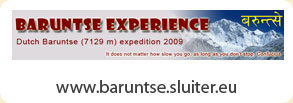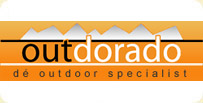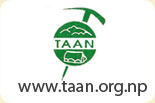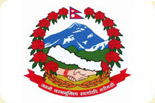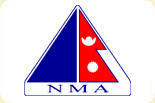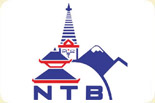- Trekking in Nepal
- Paragliding in Nepal
- Peak Climbing in Nepal
- Flight Reservation in Nepal
- Trekking Peak climbing in Nepal
- Bunjee Jumping in Nepal
- High Pass (ADVENTURE) Trek
- Hostel Accommodatin
- Hotel Accommodation in Nepal
- Jungle Safari in Nepal
- Mountain Bike in Nepal
- Travel / Tour in Nepal
- Vehicle Hire Service
Trekking in Nepal : Nar Phu Valley and Kang La Pass
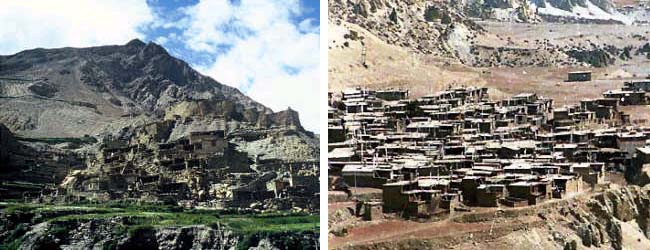 The Nar-Phoo valley in newly opened, spectacular regions of Lama, Gurung and Ghale inhabitants. Nar-Phoo valley has unique natural, cultural and geographical wounders, making it the most sought after destination in Nepal. Governemnt in 2002 has declared t
The Nar-Phoo valley in newly opened, spectacular regions of Lama, Gurung and Ghale inhabitants. Nar-Phoo valley has unique natural, cultural and geographical wounders, making it the most sought after destination in Nepal. Governemnt in 2002 has declared t| Duration - 22 | Max Altitude: 5320m |
| Trek Name: Nar Phu Valley and Kang La Pass Trek Code: Restricted - 1 |
Max Group Size: Minimm 2 people |
| Cost: | |
Nar-Phu Vallery Trek: The Nar-Phoo valley in newly opened, spectacular regions of Lama, Gurung and Ghale inhabitants. Nar-Phoo valley has unique natural, cultural and geographical wounders, making it the most sought after destination in Nepal. Governemnt in 2002 has declared this region as a new destination ad opened it for organized trekking only. This region was first of all explored by Tilman in the 1950s. Till date very few westerners have explored the virtually untouchd villages of Nar & Phoo or clmbed the many 7000 m peaks surrounding them. There are 63 household in Nar and 39 in Phoo. They are living in the village under their own social values and norms.
NAR VILLAGE: Nar (place of the Blue Sheep) is larger than Phu village, with around 65 house stacked inters around a smattering of prayer wheels and small chapels. Electricity and phone lines mar the look of the traditional village, which is a particular shame as they currently don't ever work. Views of Kang Guru and Pisang dominate the horizon. The local inhabitants (Narpas) run the gamut from old herders in robes and traditional Tibetan boots to young guns decked out in ponytails and Ray Bans.
The village's four Kagyud gompas are worth a visit, though tracking down the keys from the four different caretakers can eat up a large chunk of the day. Photos of the current (16th) Karmapa are common if Nar (the Karmapa fled Tibet in 1999, traveling to India via Mustang and Manang). The Guru Choling Gompa is at the top of town, the lower Samten Pelgye Ling has some remarkable old statutes, and the Kunsel Denchen a large Phallus painted on the wall and an unusual off-center floor plan. The newest monastery is the Samdru Choling, just below the Shanti Lodge. If you are not able to cross the Kang La or decide not to, it's possible to hike down or Koto in a long day.
PHU VILLAGE: PHU is and extraordinary village of around 40 households piled up on a bluff at the junction of a side valley. Upper village offers four beds in a simple mud walled room, with meals eaten in the traditional kitchen. You may have to ask around fro the owner Tashi Khandru; look for the multicolored windows. There are no formal shops in Phu but you can buy at Tashi's and will be well fed on porridge, soup and Dal BHAT (Nepali main meal). All supplies are carried here by mule. Devote some time to exploring the fascinating village. The deserted and crumbling uppermost section is home to the original fortified residence. Phu means 'Head of the Valley' and the 6364, pyramid-shaped peak to the north is named Bhrikuti the Nepali wife of Tibetan King Songtsen Gampo; beyond is Tibet. Phu village is snowbound and almost completely deserted in winter (December to March).
Nar - Phu's most important monastery is the Tashi Lhakhang Gompa (4150m), crowning a hillside cut by two rivers to the north of thrown. One of the three resident ani (nuns) will show you around the main prayer hall, adorned with some fine ceremonial trumpets and photos of the current Karmapa (the monastery was founded by the 10th Karmapa). Look for the festival mask of the god Dorje Drolo. There is no entry fee so leave a donation. Other rooms include the quarters of lama Karma Sonam Rinpoche, a famous amchi (traditional healer) who fled Tibet with the Dalai Lama and who now lives in Kathamndu. Also here is a library, protector chapel and a menkhang (apothecary), lined with jars or herbs, potions and antibiotics. A fine kora (pilgrim path) leads up past blue painted mani stones and back down to the lama's helipad, offering excellent views of Phu.
The similar Samtenling Gompa above the village in normally closed. There are more good village views from the bluff to the south of the village, up the steep goat track that leads to Ubi village. If you have time and budget and extra day in Phu (highly recommended), consider a hike up to either the summer Pastures of Ngoru Kharka or Himlung Base Camp. For views of Hmlung 7125m, you can follow the Yak trail into the moraine but the base camp, itself follow the streamside trail that squeezes between the hillside and the moraine.
Access: The way to Nar-Phoo villages separates from Koto (near Chame) to the northeast. The trek starts from Kotoa and ends in Ngawal after crossing Kang-La Pass (5200m.) Nar can be reached walking for 2 days while Phoo in 3 days from Koto village.
Historical Overvies: Historically, Nar-Phoo region was the place which Khampa refugees (from Tibet) once captured and lived illegally at places like Jhunum, Chyakhu, Meta and Kyang. One can still see the remnants, particularly the ruined forts of the Khampa settlement, along the trail of Nar and Phu.
Way of Living: Labor intensive lifestyle is the peculiarity of the Nar-Phoo villages. Subsistence agriculture, animal husbandary and seasonal migration to the city centres and mid hills are the usual chores of the people during winter seson. The villagers return with the onset of pleasants weathere in April. Leisure time is normally spent in knitting blanket, pherpa and making Docha (locally made shoes). The staple foods include dhindo (capray), dalbhat and variety of items made fro potato buckwheat, wheat flour while dring includes Tibetan tea (made by churning it in a bamboo or wooden hosepipe).
Natural Aspect: The valley is an untamed and amazing piece of land enriched by the natural wonders like the breath catching views of Himalayas, riveres, foundains, lakes and Pine forests. July and August are the months full of blooming colourful wind flowers. This is also and excellent habitat of Blue Sheep, Chyanhura, Himalayan Snow Cock, different species of birds and elusive Snow Leopard. A hot spring near the "Hulakin Odar" (Postman cave) on the bank of the Nar River officers a soothings naturall bath!. The bathapart from being a natural therapy is believed to cure sking ailments. Deep georges of Lepche River locally known as Mahendra pool and DOna Waterfall (near Dharmashala) are the bonus attracions for the visitors.
Culture Aspect: Unique cultural features of the Nar-Phoo valley have flourished its fame and fascination making it cultural hub to national in international visitors. There are 5 Gompas in Nar and 3 in Phoo. Out of them "Tashi Lakang Gompa" of Phoo is the most significant of all. Out of 108 Buddhist monasteries, it is believed to be the last gompa constructed by Kamarpa Rimpoche. In the new coon and full moon day, the villagers perform Puja (worship) in the monasteries.
Festival: There are many mojor festivals like Lhosar, Derchi, Dunchhyang, Yakchha etc. Although most of therse festivals are religious some have historical singificance while others are seasonal celebrations. Most peculiramong these is the death ceremony - tradition during which the Lama (monk) read their book (Chhe) and decides wheather the dead body needs to be buried or burned or fed to the vulture. It is told that the time of birth and death of an individual decides its course of the funeral process.
Yakcha Festival: Yakcha is one of the most important cultural festival practiced in the Nar vilage. Although there is no historical manuscript found so far. It is believed that the festival started frist in Ngawal village then in Bharka, Manang and finally in Nar. Although the roles can be played of freewill the roles of the king and the priest are strictly limited to particular members of the group which are passed down from generation to generation.
| Itinerary: | |
Day 01: Arrival at Kathmandu (1350m), transfer to the Hotel.
|
|
| Trips Start Dates: | |
January / February / March / April / May / September / October / November / December |
|
| Included in your trip: | |
All Overland transfers including Kathmandu to Besisahar and Pokhara to Kathmandu.
|
|
| Not included: | |
Personal equipment & Trekking equipments for members.
|
|
| Book Trip Now |

